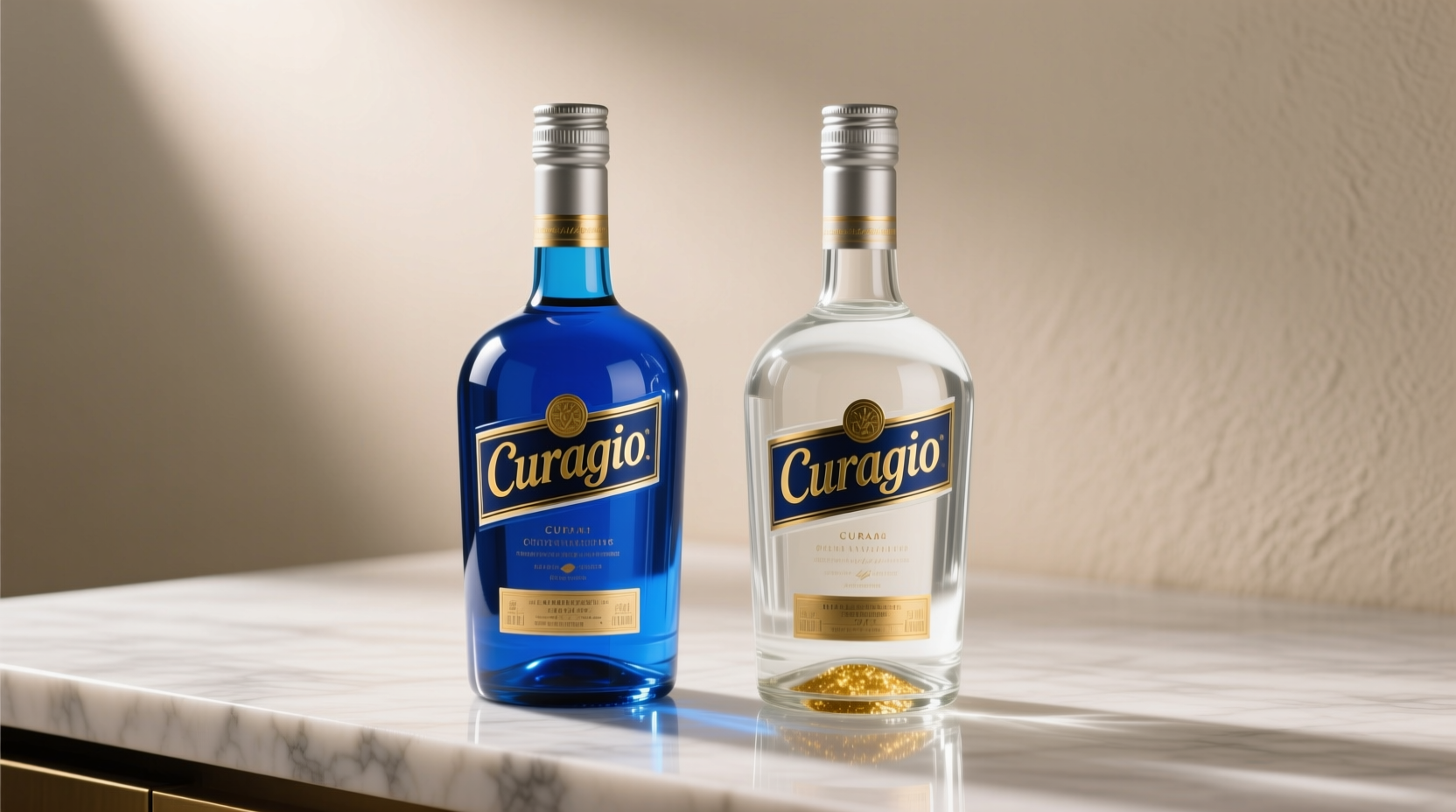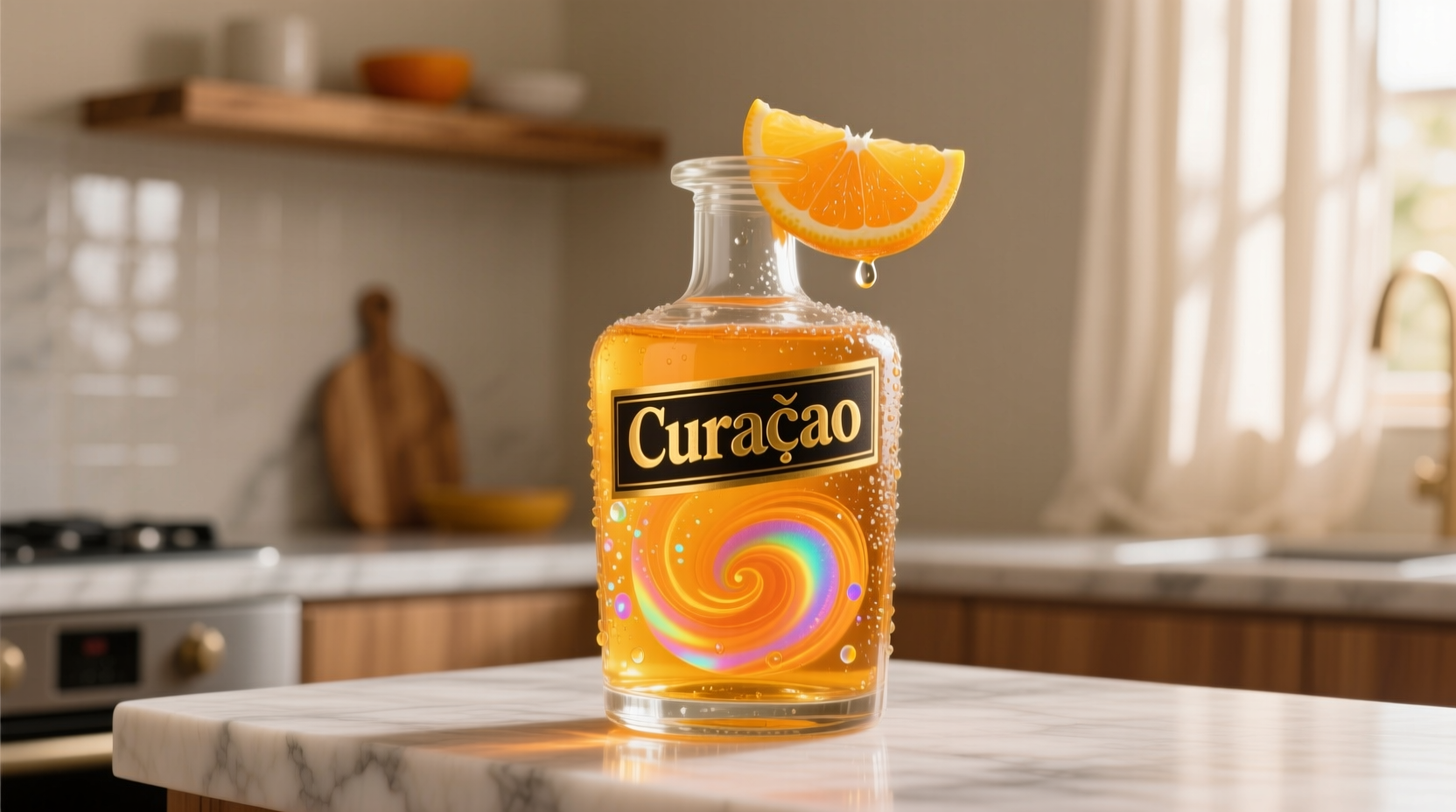If you've ever wondered what gives tropical cocktails their distinctive orange flavor beyond simple sweetness, you've likely encountered curacao. This versatile liqueur brings a unique dimension to drinks and desserts that simple orange juice or extract can't replicate. Understanding its precise flavor profile helps you use it effectively in your culinary creations.
The Essence of Curacao Flavor
Curacao's distinctive taste comes from the dried peels of Laraha citrus fruit, a bitter orange variety that grows on the island of Curaçao in the Caribbean. Unlike sweet oranges you'd eat as fruit, Laraha oranges produce a complex flavor profile when processed into liqueur:
- Bitter orange foundation - The dominant note resembling orange marmalade with pronounced bitter elements
- Sweet caramel undertones - From the sugar added during production, balancing the bitterness
- Subtle spice notes - Hints of cinnamon, nutmeg, or coriander depending on the brand's recipe
- Floral accents - Delicate orange blossom notes in premium varieties
- Alcohol warmth - Typically 15-25% ABV, contributing a clean spirit finish
According to flavor chemists at the Institute of Food Technologists, the bitterness in authentic curacao comes from limonin and nomilin compounds naturally present in the Laraha orange peels, creating a more sophisticated profile than artificially flavored alternatives (IFT, 2020).

Blue vs. Clear Curacao: Critical Flavor Differences
One of the most common misconceptions about curacao involves the blue variety. The vibrant blue color you see in many cocktails comes from artificial coloring, which significantly alters the flavor profile:
| Characteristic | Traditional Clear Curacao | Blue Curacao |
|---|---|---|
| Primary Flavor | Bitter orange with balanced sweetness | Overwhelmingly sweet, artificial orange |
| Bitterness Level | Moderate to high (authentic profile) | Minimal (sweetness dominates) |
| Natural Ingredients | Orange peels, sugar, spirit base | Artificial flavors and colors |
| Cocktail Function | Provides complex flavor dimension | Primarily for visual effect |
| Recommended Use | Craft cocktails, cooking applications | Themed parties, novelty drinks |
How Curacao Compares to Other Orange Liqueurs
Many people confuse curacao with similar orange liqueurs. Understanding these differences helps you choose the right product for your needs:
- Triple Sec - Generally lighter, sweeter, and less complex than traditional curacao, with a higher alcohol content (typically 20-30% ABV)
- Cointreau - A premium orange liqueur with a cleaner, more refined orange flavor and higher alcohol content (40% ABV) than most curacaos
- Grand Marnier - Combines cognac with orange liqueur, creating a richer, more complex profile with distinct brandy notes
As cocktail historian David Wondrich explains in Punch: The Delights (and Dangers) of the Flowing Bowl, "Traditional curacao offers a more rustic, bitter-sweet profile that connects directly to its Caribbean origins, while modern triple sec represents a more standardized, approachable interpretation of orange liqueur."
When to Use Curacao: Practical Applications
Knowing what curacao tastes like helps you determine where it shines and where other options might work better:
Best applications for traditional curacao:
- Craft cocktails requiring balanced sweet-bitter notes (Mai Tais, Sidecars)
- Dessert sauces where complexity matters (chocolate-orange ganache)
- Marinades for poultry or pork that benefit from citrus notes
- Homemade orange extract for baking
Limitations to consider:
- Avoid substituting blue curacao in recipes calling for traditional curacao (flavor profiles differ significantly)
- Not ideal for dishes where pure sweetness is required (use triple sec instead)
- Loses nuance in very sweet cocktails where its bitter notes get overwhelmed
Curacao Through Time: Flavor Evolution
Curacao's flavor profile has evolved significantly since its creation:
- 1600s - Dutch settlers on Curaçao began producing liqueur from locally grown Laraha oranges, creating a bitter, medicinal-tasting spirit
- 1890s - Senior & Co. perfected the modern production method, adding sugar and spices to create a more balanced profile
- 1940s - Blue curacao invented in the United States, prioritizing visual appeal over authentic flavor
- 2000s - Craft cocktail movement revived interest in traditional, clear curacao with authentic flavor profiles
- Present - Premium brands focus on terroir and traditional production methods to highlight nuanced flavor characteristics
This historical evolution explains why you'll find such variation in what curacao tastes like today. Modern craft producers like Senior Curaçao and Pierre Ferrand Dry Curaçao have returned to traditional methods, creating products with more authentic, complex flavor profiles than mass-market alternatives.
Choosing Quality Curacao
When selecting curacao, look for these indicators of authentic flavor:
- Clear or amber color (unless specifically wanting blue for visual effect)
- Alcohol content between 20-30% (higher quality products tend toward the lower end)
- Ingredients listing natural orange peels rather than "natural flavors"
- Production method mentioning aged citrus peels or traditional maceration
- Brands with Caribbean heritage (particularly Curaçao island origin)
Professional mixologists recommend tasting curacao neat before using it in cocktails. As Antonio Diez, head bartender at The Aviary in Chicago notes, "The best curacaos offer a progression of flavors—initial sweetness followed by pronounced bitter notes that then mellow into warm spice. If it tastes one-dimensional or overwhelmingly sweet, it's likely using artificial flavorings."
Putting Curacao Knowledge to Work
Now that you understand what curacao tastes like and how it differs from similar products, you can make informed choices for your cocktails and cooking. Whether you're crafting a classic Mai Tai that requires the bitter-sweet complexity of traditional curacao or creating a visually striking blue cocktail for a special occasion, knowing the flavor profile helps you achieve better results.
Remember that the most authentic curacao experience comes from clear varieties made with real orange peels, offering that distinctive balance of sweet and bitter notes that has made it a cocktail staple for centuries. When selecting your bottle, prioritize quality ingredients over visual appeal for the most rewarding flavor experience.











 浙公网安备
33010002000092号
浙公网安备
33010002000092号 浙B2-20120091-4
浙B2-20120091-4